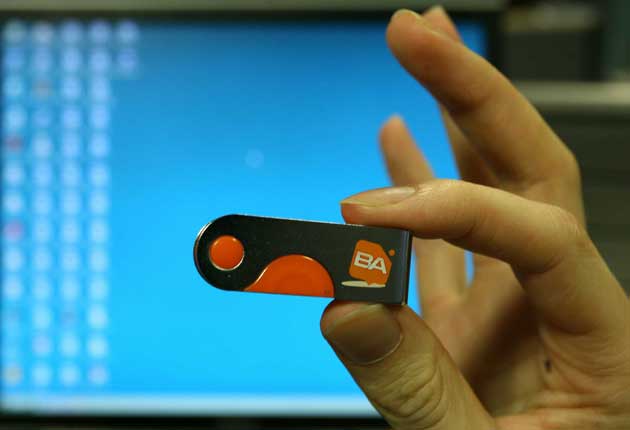World access via a USB stick?
This stick lets you access your PC from anywhere on the planet. But how does it really work? Steve Connor takes it out on the road to find out

Soon after black-and-white televisions became commonplace in British living rooms, a nasty thought began to spread among the more paranoid members of society. If you could watch the characters on the box, could they watch you watching them? Of course they couldn't, but that didn't stop some people from harbouring delusional notions.
The same sort of thoughts come to mind when you are logged on to your computer. Is it possible that other people could be viewing your screen as you check your bank account or compose that love letter? It always comes as a bit of shock in the office when the IT department logs on to your computer remotely and starts moving the cursor around the screen. But that's the office, where work is not supposed to be a private activity, and a local area network allows IT to play at being an all-seeing digital deity.
The home is different. We are told about the dangers of the internet and how a computer that is logged on to a broadband connection is vulnerable to viruses, spyware, malware and all kinds of electronic eavesdropping. But is it possible for anyone to really see your screen from outside your home without the technical infrastructure of the Government Communications Headquarters?
The answer is "yes", and you can do it quite legitimately using a simple device that allows you to log on to your computer from any internet connection in the world. It allows you to open up the screen of your home computer or laptop through the internet and do whatever you want to the files, photos or documents that are stored there, using a remote terminal. And you can to it from an internet cafe in Basildon or Buenos Aires.
It is called BeAnywhere and is marketed by a company called Ability Software International (ASI), based in Crawley, West Sussex. It comes as a little orange USB memory stick which acts as a "drive" that controls access to as many as three different computers, all of which have to be registered. From my office computer I can access my home computer, a laptop and a screen in the London headquarters of MI6.
Of course I made that last one up. You can only see the desktop screens of computers that you have been physically in front of in order to set up the right access passwords, but it is a surprisingly simple affair. Apart from a little problem I had with Windows Vista – the font size on the desktop settings was set to a non-default setting – I managed to set up my computers first time. I was able to see my office computer from a hotel in Chicago, and search my home computer from the office.
To set up a computer for remote access, the BeAnywhere USB drive is used to install a server on the machine. When the computer is left on and connected to the internet, the server detects a remote user with the right passwords and allows them to see the desktop screen and to control the mouse and keyboard as if they were sitting in front of the computer.
Chris England, of ASI, said that security is the paramount concern. "The BeAnywhere system is very concerned about security, about making sure that the users are completely safe using the service and about making sure that their data and information is completely secure," he says.
To ensure this, there are three levels of security. Two sets of passwords are used, one to access the USB drive and another to access the remote computer. The communications between the computers have a digital signature to prevent interception by third parties. "All the keyboard commands or the mouse clicks are encrypted and a digital signature is applied to each one, which enables guaranteed inviolability," Mr England says.
The final layer of security is to do with system encryption. "This is the same security level used in security communication protocols, like for example the SSL (Secure Sockets Layer) protocol which is used by internet banking, or to internet pages dedicated to processing online payments," he says.
But I can't help but feel that if it was so easy for me to see my computer from anywhere in the world, the same could be true of someone else. What about BeAnywhere employees? Could they spy on me? "No. BeAnywhere only knows if the PC's have had a remote-access session, and we use this information to reach our users and try to understand if they are having problems using the service," Mr England explains.
"We have no way of knowing what goes back and forth between the two computers. This is due to the communications security: the digital signature is known exclusively by the two connected computers at that particular session. The next time they connect, a new digital signature will be issued making sure the communications are protected."
Costing less than £40, and an annual fee of £29.99, BeAnywhere is a remarkable device. Makes you wonder what GCHQ can do with its multimillion-pound budget.
Join our commenting forum
Join thought-provoking conversations, follow other Independent readers and see their replies
0Comments